Functional hair cell mechanotransducer channels are required for aminoglycoside ototoxicity
- PMID: 21818312
- PMCID: PMC3144223
- DOI: 10.1371/journal.pone.0022347
Functional hair cell mechanotransducer channels are required for aminoglycoside ototoxicity
Abstract
Aminoglycosides (AG) are commonly prescribed antibiotics with potent bactericidal activities. One main side effect is permanent sensorineural hearing loss, induced by selective inner ear sensory hair cell death. Much work has focused on AG's initiating cell death processes, however, fewer studies exist defining mechanisms of AG uptake by hair cells. The current study investigated two proposed mechanisms of AG transport in mammalian hair cells: mechanotransducer (MET) channels and endocytosis. To study these two mechanisms, rat cochlear explants were cultured as whole organs in gentamicin-containing media. Two-photon imaging of Texas Red conjugated gentamicin (GTTR) uptake into live hair cells was rapid and selective. Hypocalcemia, which increases the open probability of MET channels, increased AG entry into hair cells. Three blockers of MET channels (curare, quinine, and amiloride) significantly reduced GTTR uptake, whereas the endocytosis inhibitor concanavalin A did not. Dynosore quenched the fluorescence of GTTR and could not be tested. Pharmacologic blockade of MET channels with curare or quinine, but not concanavalin A or dynosore, prevented hair cell loss when challenged with gentamicin for up to 96 hours. Taken together, data indicate that the patency of MET channels mediated AG entry into hair cells and its toxicity. Results suggest that limiting permeation of AGs through MET channel or preventing their entry into endolymph are potential therapeutic targets for preventing hair cell death and hearing loss.
Conflict of interest statement
Figures

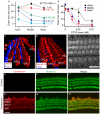

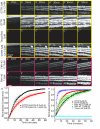
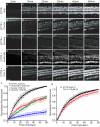
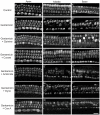
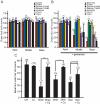

References
-
- Rizzi MD, Hirose K. Aminoglycoside ototoxicity. Curr Opin Otolaryngol Head Neck Surg. 2007;15:352–357. - PubMed
-
- Rybak LP, Ramkumar V. Ototoxicity. Kidney Int. 2007;72:931–935. - PubMed
-
- Cheng AG, Johnston PR, Luz J, Uluer A, Fligor B, et al. Sensorineural hearing loss in patients with cystic fibrosis. Otolaryngol Head Neck Surg. 2009;141:86–90. - PubMed
Publication types
MeSH terms
Substances
Grants and funding
LinkOut - more resources
Full Text Sources
Other Literature Sources
Molecular Biology Databases
Miscellaneous

